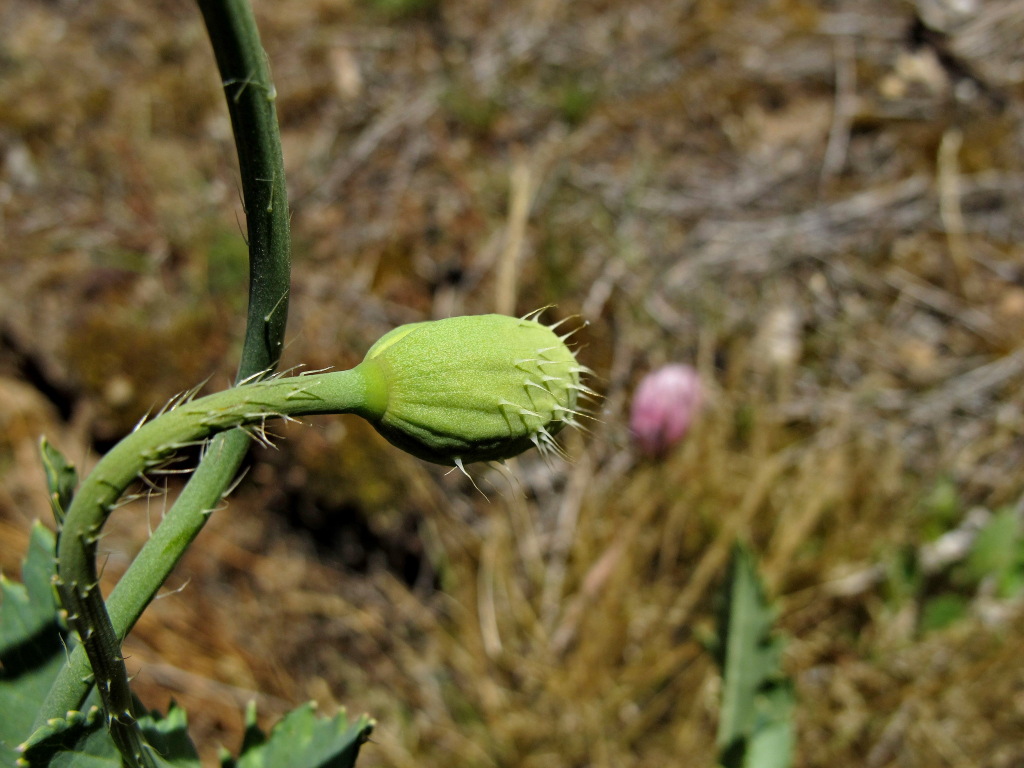Papaveraceae
Annual, biennial, or perennial herbs, shrubs, or small trees, usually taprooted, sometimes rhizomatous or tuberous; sap sometimes bitter, often sticky. Stems leafy or naked, simple or branched, erect or procumbent, sometimes twining. Leaves simple or pinnately compound, usually alternate, sometimes subopposite or opposite or whorled, mostly 1–3-pinnately lobed or dissected, sometimes entire; stipules lacking. Inflorescence a cyme or raceme (rarely a panicle, corymb or umbel), usually bracteate, axillary or terminal, 1–many-flowered. Flowers bisexual, actinomorphic to strongly zygomorphic; sepals 2 or 3, free or connate, caducous, sometimes peltately attached; petals free or united, mostly twice as many as sepals, sometimes more; stamens 4–many; ovary superior, 1- or 2-locular, style present or absent, stigmas or stigma lobes 2–many. Fruits capsular, 1- or 2-locular (sometimes incompletely multilocular by placental intrusion), dehiscing via valves, pores, transversely or longitudinally dehiscent, or nut-like and indehiscent; seeds 2–many, small, often arillate.
About 44 genera and 825 species distributed world-wide but mainly in the Northern Hemisphere; 11 genera and 26 species in Australia, all introduced.
Several species of Corydalis s. lat. are grown as ornamentals in Australian gardens. Liden (1986) reinstated a number of segregate genera formerly included within Corydalis, among these Pseudofumaria. Willis (1973, p. 164) provides anecdotal evidence that Pseudofumaria lutea (L.) Liden, (syn. Corydalis lutea (L.) DC.) may have been naturalized in western Victoria (Horsham, Nhill and Kaniva), but no herbarium records exist for Victoria and the species is not here regarded as naturalized. Corydalis capnoides (L.) Pers. may persist within gardens but has not been noted to escape cultivation.
The segregation of Fumariaceae from Papaveraceae and in particular the placement of Hypecoum and Pteridophyllum in either family, or as a separate, intermediate family has been the cause of considerable conjecture. Bruckner (1982) maintained that Hypecoum and Pteridophyllum are more closely allied to sections of the Papaveraceae than to the remainder of the Fumariaceae. Cronquist (1981) retained these two genera within the Fumariaceae admitting that they are probably equally but uncomfortably placed in either. The most recent morphological and molecular studies of these taxa have resulted in the combination of these two families under Papaveraceae, where they are recognised at subfamily rank.
Kiger, R.W.; Walsh, N.G. (1996). Papaveraceae. In: Walsh, N.G.; Entwisle, T.J., Flora of Victoria Vol. 3, Dicotyledons Winteraceae to Myrtaceae, pp. 66–73. Inkata Press, Melbourne.
 Spinning
SpinningBruckner, C. (1982). Zur Kenntnis der Fruchtmorphologie der Papaveraceae und Hypecouaceae. Feddes Repert. 93: 153–212.
Cronquist, A. (1981). An intergrated system of classification of flowering plants. Columbia University Press, New York.
Hoot, S.B.; Kadereit, J.W.; Blattner, F.R.; Jork, K.B.; Schwarzbach, A.E.; Crane, P.R. (1997). Data congruence and phylogeny of the Papaveraceae s. l. based on four data sets: atpB and rbcL sequences, trnK restriction sites, and morphological characters. Systematic Botany 22: 575–590.
Liden, M. (1986). Synopsis of Fumarioideae (Papaveraceae). Opera Botanica 88: 1–133.
Wang, W.; Lu, A.M.; Ren, Y.; Endress, M.E.; Chen, Z.D. (2009). Phylogeny and classification of Ranunculales: Evidence from four molecular loci and morphological data. Perspect. Pl. Ecol. Evol. Syst. 11: 81–110.



